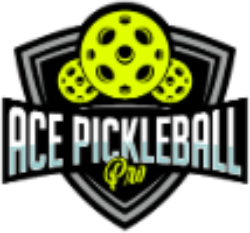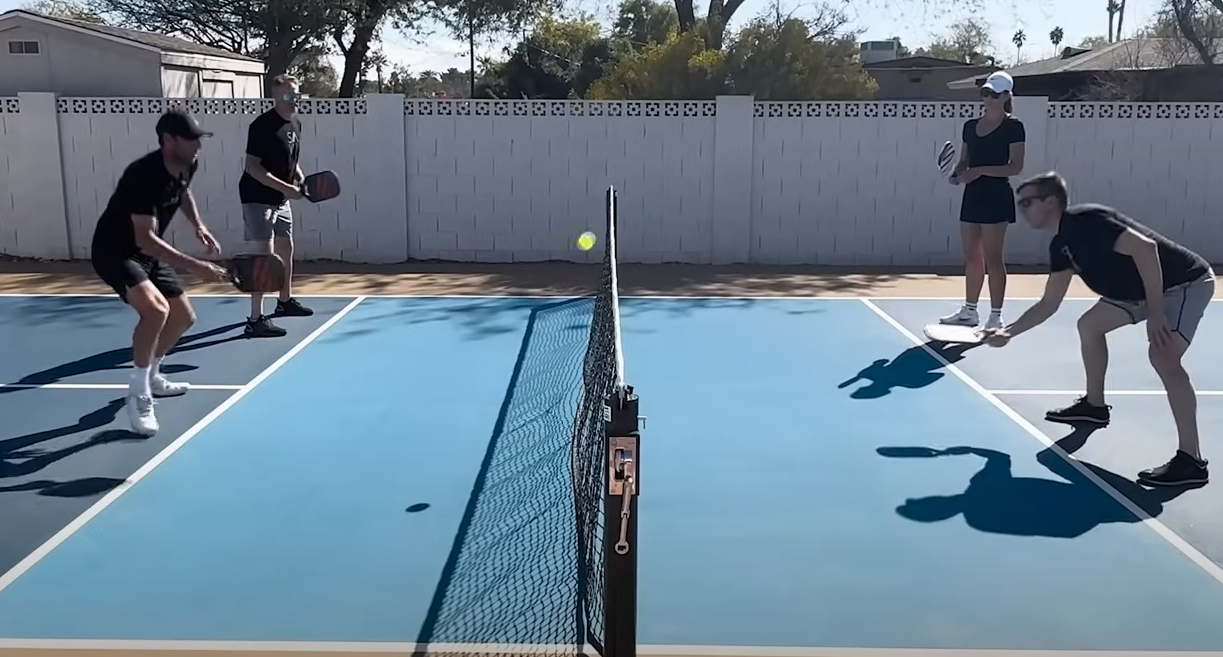Unlock Comfort, Master Control, and Future-Proof Your Game
Why This Isn’t Just a Gear Guide
Choosing your first pickleball paddle isn’t just about finding something light and easy to grip—it’s your first major investment in a performance trajectory.
This guide is built not just to help you choose—but to help you grow. You’ll walk away knowing:
- What to buy
- Why it matters
And how today’s choice sets up tomorrow’s victories
Because the wrong paddle doesn’t just cost you points—it teaches your body bad habits.
Think Like an Athlete: Pickleball Paddle = Skill Amplifier
A paddle is not just a tool; it’s a feedback loop. Your paddle should:
- Correct your form
- Reinforce your strengths
- Expose areas to grow
Think of it as a coach, not just a bat.
Pro Tip: If your paddle feels too good on day one, it might be too forgiving. Choose a paddle that challenges you to improve—not one that hides your flaws.
Learn more about how to hold a pickleball paddle properly to maximize your grip and minimize wrist strain.
Emerging Trends in Paddle Tech (2025 and Beyond)
We’re entering the post-material era of sports gear, where performance enhancement comes from sensors, AI-feedback, and ergonomic intelligence.
Speculative Paddle Features (Real or Coming Soon):
| Future Feature | Function |
|---|---|
| AI-Integrated Core | Tracks spin, speed, shot zones |
| Haptic Feedback Handle | Vibrates to correct grip or hit angle |
| Smart Polymer Surfaces | Auto-adjusts rigidity based on pressure |
| App-Linked Stats | Shows match analytics + shot improvement |
Brands like JOOLA and Selkirk are already prototyping embedded sensor paddles.
Insight Boost:
Choosing a basic composite paddle with a wide grip channel or reinforced core sets you up to transition into these smarter systems without needing to change form.
The Paddle Progression Roadmap
We’ve reimagined the player development curve through paddle types.
Game-Like Progression System:
| Stage | Paddle Goal | What It Unlocks |
|---|---|---|
| Beginner | Comfort + Forgiveness | Builds confidence |
| Level-Up | Slightly heavier, wider core | Introduces power, develops muscle memory |
| Competitive | Graphite + Nomex core | Elevates power, control balance |
| Elite/Tactical | AI-enhanced paddle | Smart feedback, precision tuning |
This isn’t just progression—it’s a loop. Smart paddles will soon provide training-mode coaching and sync with drills.
Behavioral Design: Match Paddle Features to Learning Styles
How you learn impacts what paddle works best for you.
| Player Type | Cognitive Profile | Best Paddle Traits |
|---|---|---|
| Kinesthetic Learner | Learns by doing | Lighter paddle, oversized sweet spot |
| Visual Learner | Learns by seeing placement | Polymer core + visible face edge |
| Analytical/Logical | Wants precision and control | Midweight graphite paddle |
| Reactive/Instinctive | Responds to rhythm/timing | Balanced paddle with vibration dampening |
No paddle fits all learners. Tailor your paddle choice like a learning system, not a product.
Explore our guide to the best control paddles to match paddle feel with your thinking style.
Future-Proof Feature Pick: Paddle Shape Compatibility
Soon, accessories like grip sensors, training gloves, and paddle-mount cameras will rely on standard dimensions.
Buy paddles that follow USA Pickleball core sizing but leave grip space for:
- Glove-integrated biometrics
- Clip-on cameras (for shot replays)
- Edge-trackers for sweet spot heat maps
Ecosystem Thinking: Don’t Just Buy a Paddle—Buy Into a System
Emerging ecosystems will reward players who choose paddles that are platform-ready.
Brands are rolling out ecosystems like gaming companies:
- Paddle → App → Leaderboard
- Paddle → App → AI Coach
Examples:
- Selkirk Labs offers a “Paddle Passport” where users test prototypes and log performance via mobile app
- JOOLA Vision is launching paddles with real-time motion data sharing (expected late 2025)
✅ Recap: Choose Based on Trajectory, Not Just Comfort
| If You Are… | Choose… | Because… |
|---|---|---|
| A brand-new beginner | Lightweight composite + large grip | Comfort + maneuverability |
| A tech-savvy learner | Smart-compatible graphite/polymer | Preps you for AI feedback + app syncing |
| A long-term aspirant | Modular paddle, replaceable core | Extends lifespan + integrates with tools |
| A casual player | Midweight composite with edge guard | Balanced cost, control, and durability |
Bonus: Pickleball Paddle Picker Flowchart
Still unsure? This quick decision tool gets you pointed in the right direction:
START HERE: What’s your current paddle goal?
“Just getting started and want something easy to handle?”
➡️ YES
➡️ Do you have joint pain (elbow/wrist/shoulder)?
➡️ YES → Try a lightweight paddle for joint relief
➡️ NO → Consider a balanced beginner paddle
“Want to improve fast and track progress?”
➡️ YES
➡️ Open to smart paddles?
➡️ YES → Try customizable paddles with app syncing
➡️ NO → Look into graphite paddles for control
“Planning to compete?”
➡️ YES
➡️ Have tennis experience or strong form?
➡️ YES → Check out top picks for tennis players
➡️ NO → Start with an intermediate paddle
Not sure on thickness? Here’s the 13mm vs 16mm paddle comparison
🇺🇸 USAPA Approval: Optional but Important
If you’re aiming for tournament play, make sure your paddle is USA Pickleball-approved.
✅ View the official USA Pickleball Equipment Approval Page
Certification Fee: $1,500 per model (for paddle manufacturers)
For casual players, approval isn’t required—but it’s a strong quality assurance marker.
👉 Note: The direct paddle list may require navigation from the “Approved Equipment” page above.
FAQ: Beginner Pickleball Paddle Questions, Answered
🔸 What weight should a beginner paddle be?
A midweight paddle (7.5–8.2 oz) is ideal for most beginners—it offers control, decent power, and helps avoid fatigue. Lighter paddles can be easier on joints but reduce drive.
Learn what weight paddle is best for women
🔸 Is graphite better than composite?
Not always. Composite is softer and more forgiving—great for learning. Graphite is stiffer and more precise, better for advanced technique.
Here’s a full graphite vs carbon fiber breakdown
🔸 What shape is best for beginners?
A widebody paddle gives you more surface area and a larger sweet spot—perfect for developing consistency.
Want to understand shape vs grip? Short vs long handle paddle guide
🔸 Do I need a USAPA-approved paddle?
Not unless you plan to compete—but it’s a strong trust signal.
✅ View the official USAPA-approved paddle list here
🔸 How do I know when to upgrade?
When your paddle starts feeling limiting—whether in control, power, or spin—it’s time to level up.
Explore intermediate-level paddles here
P.S. — You’re Not Just Buying a Paddle… You’re Buying a Playstyle.
The paddle you choose is your first real teammate. Whether you’re an aggressive slammer, soft-game specialist, or curious beginner—choose the one that helps you grow.
If you’re still unsure, revisit our complete beginner paddle guide, or explore the Ace Pickleball Pro homepage for reviews, tech tips, and gear you can trust.
Game on.

